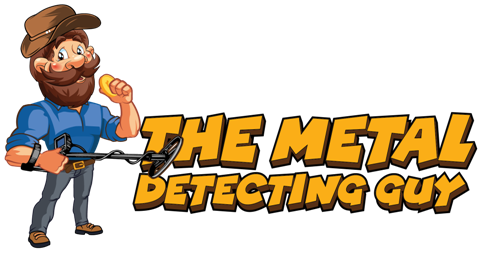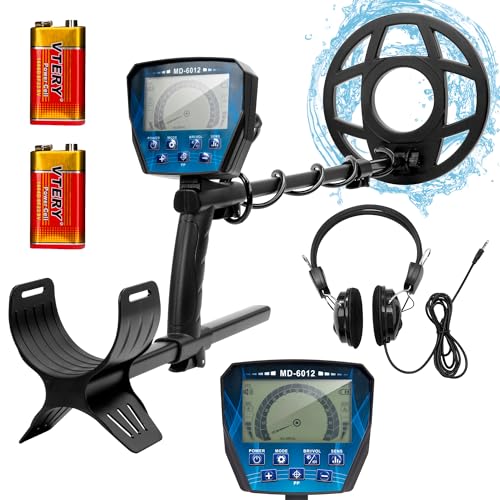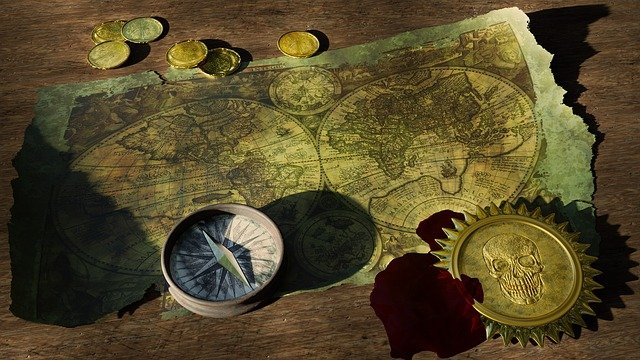
If you’re new to metal detecting, you might be wondering how to choose the right spot to start your treasure hunt. After all, there’s no use wasting time searching an area, that’s unlikely to yield any results. Here we take a look at the best way to research metal detecting sites
So when it comes to choosing a great metal detecting location doing your research and being prepared can make all the difference. By taking the time to plan your route before you start metal detecting, you can save yourself a lot of time and effort and increase your chances of finding hidden treasures.
Fortunately, there are a few key things to look for that can help tip the odds in your favor.
First, look for old trees and undeveloped land – these are signs that the territory has remained untouched for many years.
Second, try to avoid areas with heavy foot traffic, as this will make it more difficult to find coins and other valuable items.
Lastly, consider getting up early to metal detect – this will help you avoid large crowds or events that could interfere with your search.
By following these simple tips and the other tips we give you below, you’ll be well on your way to finding hidden treasures in no time!
How To Use Historic Maps to Locate Top Treasure Hunting Sites

Trusty old maps are a metal detectorist’s best friend. Not only do they help you find potential treasure-hunting hotspots which will be ideal to metal detect, but they can also give you an idea of the types of objects that might be buried in those areas. When combined with modern online mapping resources, you can get a pretty good idea of where to start your metal detecting. However, it’s important to remember that not all maps are created equal. Make sure to consult multiple sources before zeroing in on a particular location and grab your metal detector. Once you’ve done your research, it’s time to get out there and start hunting! With a little patience and persistence, you just might find the buried treasure you’ve been dreaming of.
Heres an ‘old map’ sites to get you started:
http://www.historicmapworks.com/
How to use these old maps:
1)To locate your city, choose a map that is appropriate for you.
2) Try and find the oldest map of that area available on the site
3) This will give you a whole bunch of maps to choose from. Find an area that you want to explore
4)You then want to ‘overlay’ this map. To do this click on the FREE Historic Earth tab. This overlays the newest map with the historical one so you can see how the roads match up and where all the buildings were.
5) Then on the right-hand side you will find a slider to change the map opacity
6) Next you need to zoom in to a select area and start exploring
7) What you need to look for is houses or buildings that are still standing today. These are places you may want to go door-knocking.
8) If an area really jumps out at you the next step is to find it in Google Maps and change it to street view. This will show the potential of the area and the houses that are there

Tricks I Use To Find Old Homesites
I love finding old homesites when I’m out metal detecting. While it can be a bit of a challenge to locate these hidden gems, there are a few tricks that I’ve learned over the years that can help increase your chances of success.
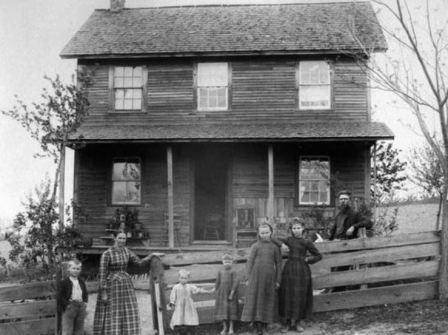
One of the best ways to find old homesites is to look for changes in the landscape. Look for areas where the terrain suddenly flattens out or where there are large rocks or boulders. These are often signs that there was once a structure on the site.
Another good indicator is a change in vegetation. Look for areas where the trees are more widely spaced out or where there is a sudden abundance of smaller plants. This can often be an indication that the area was once cleared for a home or other building.
Finally, keep an eye out for any man-made features, such as storage pits, wells, or cellars. These are all good indications that there was once a human presence on the site.
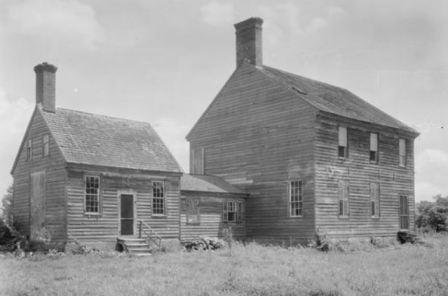
With a little patience and some detective work, you should be able to find plenty of old homesites to explore with your metal detector.
Scout out the area to get an idea of its topography and what might be hiding beneath the surface.
One of the most important things to consider is the topography of the area you’ll be searching. hills, valleys, and other features can affect what kinds of objects might be hidden beneath the surface.
Are you looking for lost coins in an old field? Then you’ll want to pay attention to any changes in elevation that could indicate where a previous settlement was located.
Searching for buried treasure on a beach? Then you’ll need to be aware of the tides and how they might have shifted objects over time. By taking the time to study the landscape, you’ll increase your chances of finding something valuable.
Talk to locals who may have some insight into the history of the area.
Metal detecting can be a great way to find hidden treasures, but it can also be a way to uncover the history of an area. By talking to locals, you may be able to gain some insight into the area that you would not have otherwise.
They may be able to tell you about specific areas that are known for having finds, or they may even know the story behind a particular find.
In addition, locals may also be able to provide you with information about places to avoid, as well as any regulations that you need to be aware of.
By taking the time to talk to locals, you can maximize your chances of finding both treasures and historical insights in your metal detecting journey.
Try the local Library
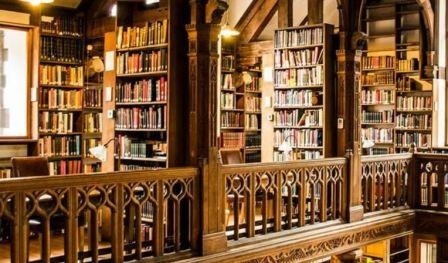
Local history is well-documented in libraries. These stories, memoirs, and documents are frequently brimming with clues to assist you find historic sites. Pick up any book on the local history of your city.
Look out for any articles which point to local celebrations and events, old boarding houses, historical sporting events, and the towns industries.
These are all possible leads to areas where you may go hunting.. If nothing else, they will give you a sense of history and some crucial insights into the history of an area you want to metal detect.
Visit the local metal detecting club
One of the best ways to find the ideal location for metal detecting is to pay a visit to the local metal detecting club.
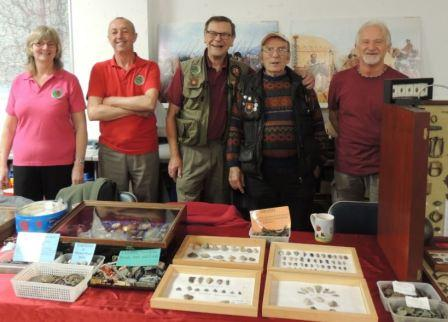
The members of these clubs are usually well-versed in the hobby and can offer valuable tips and advice. They may also be familiar with good spots for detecting that you were not aware of.
In addition, the club can provide you with a list of places that have been previously approved for metal detecting.
This can save you a lot of time and effort and find the best metal detecting sites in that area, make sure to stop by your local club and introduce yourself. You will be glad you did.
Make a list of possible targets based on what you find during your research and scouting.
You may create a list of search sites based on your maps. Always keep track of local and national laws and obtain permission before going onto private land, especially if you’re not sure what the rules are. Look for these possibilities.:
- Ball fields
- Beaches, lakes, quarries
- Campgrounds
- Old Fairground sites
- Parks and preserves
- Picnic and recreation areas
- Schools and churches
- Sight-seeing viewpoints
- Racetracks
Plan your route to maximize your chances of finding treasure.
When you go metal detecting, it’s important to do your research and choose an area that is likely to yield finds. Once you’ve done that, it’s a good idea to plan your route in order to maximize your chances of success.

One way to do this is to take into account the lay of the land. If you’re searching an area that has a lot of hills and valleys, for example, it makes sense to start at the highest point and work your way down, as this will help you to cover more ground.
Another thing to consider is the type of terrain you’ll be dealing with. If you’re searching an area that is mostly flat, you’ll be able to cover more ground if you walk in a straight line.
However, if you’re searching an area that is full of obstacles, such as trees and bushes, it may be more effective to zig-zag your way through the area in order to make sure you don’t miss anything.
By taking the time to plan your route before you start searching, you can save yourself a lot of time and effort and increase your chances of finding hidden treasures.
Bring along the tools and supplies necessary for recovering any treasure you may find.
Once you’ve done your research and found the ideal location to metal detect, it’s important to bring along the tools and supplies necessary for recovering any treasure you may find.
First and foremost, you’ll need your detector and spare batteries.
In addition, you’ll need a good-quality shovel or trowel for digging. Take a look at what we think are the best digging tools for metal detecting here
A good pair of gloves to protect your hands, check out what we consider to be the 6 Best Metal Detecting Gloves here.
And finally, you’ll need a bag or bucket to carry your finds.
And don’t forget a first-aid kit in case of any accidents. With the right tools and supplies, you’ll be ready to start hunting for buried treasure
Always remember to respect private property rights and ask for permission before entering any property with a metal detector.
You have your metal detector, you have done your research on where to find the best spots for metal detecting, and you are ready to go treasure hunting!
But before you start your detecting adventure, there is one essential thing to remember: always respect private property rights and ask for permission before entering any property.
Even if a spot looks abandoned or like nobody is using it, it is still important to get permission before trespassing. The owner of the property may not be aware that you are planning to use their land for metal detecting, and they may not be okay with it.
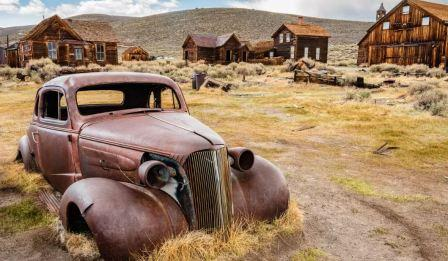
By asking for permission first, you can avoid any unpleasant surprises or confrontations down the road. And who knows – the owner might even be willing to share some tips on where to take your metal detector and find the best treasures!
So always remember to ask before you start detecting on somebody else’s property.
Final Thoughts
When it comes to metal detecting research and finding the best metal detecting sites, you can see that there are plenty of tools at your disposal and bringing along the right gear and supplies can make all the difference.
By taking the time to plan your route before you start to metal detect, you can save yourself a lot of time and effort especially when detecting in the winter months, when conditions can be difficult, and increase your chances of finding hidden treasures.
And don’t forget to respect property rights – always ask for permission before entering any property with your detector. With these tips in mind, you’re ready to hit the treasure hunt trail!
FAQ
How do you research areas for metal detecting?
Before you start metal detecting, it is important to do your research. This will help you to find areas that are likely to yield interesting finds.
One of the best ways to research potential metal detecting sites is to talk to local historians. They can tell you about any significant events that took place in the area, and they may also be able to point you towards sites that have already been investigated.
Another useful source of information is old maps which you can find in the local library. These can help you to identify areas that have changed over time, which may indicate where something has been buried or lost.
Finally, don’t forget to check online forums and social media groups dedicated to metal detecting. People who share your hobby are often happy to share their knowledge, and you may be able to learn about some great places to go metal detecting that you wouldn’t have known about otherwise.
Can I metal detecting on battlefields?
Battlefield sites are often protected as historical landmarks, and metal detecting is generally not allowed.
Furthermore, many battlefields contain unexploded ordinances (UXOs), which can pose a serious safety hazard.
However, there are some exceptions to this rule. For example, some battlefields allow metal detecting if it is part of an organized archaeological survey.
If you’re unsure whether metal detecting is allowed in a particular area, it’s always best to check with the local authorities before starting your search.
Can you metal detect on public footpaths?
In the United States, laws governing the use of metal detectors vary from state to state. However, in general, it is legal to use a metal detector on public footpaths as long as you do not disturb plant life or damage property.
Some states require a permit for using a metal detector on public land, so it is always best to check with your local park ranger or government office before setting out.
If you do plan to use a metal detector on public footpaths, be sure to respect the property of others and fill any holes you dig.
By following these simple guidelines, you can enjoy a fun and rewarding hobby while respecting the rights of others.
How do I metal detect on an old home site?
One of the best places to look for old coins and other metal treasures is an old home site. However, metal detecting an old home site can be a bit tricky.
The first step is to get permission from the owner of the property. Once you have permission, you will need to do some research to determine the likely location of the house.
Look for old maps or records that might indicate the size and location of the house. Once you have a general idea of where to look, you can start metal detecting.
Be sure to scan the area carefully, as old home sites often have a lot of debris that can make it difficult to find targets.
If you take your time and use a bit of patience, you should be able to uncover some great finds at an old home site.
Where can I metal detect Civil War relics?
One of the best places to look for Civil War relics is on former battlefields. Many relics still remain in the ground, waiting to be discovered.
Metal detectors can be a helpful tool in finding these hidden treasures. However, it is important to obtain permission before searching on private land. In addition, many state and national parks have strict regulations regarding the use of metal detectors.
Once you have found a good location to search, be patient and methodical in your approach. Start by scanning the area with your metal detector. If you get a signal, carefully dig up the soil and examine the object.
If you think you may have found a relic, it is best to consult with a historian or other expert before removing it from the site.
With a little patience and perseverance, you may be able to find some amazing Civil War relics of your own.
